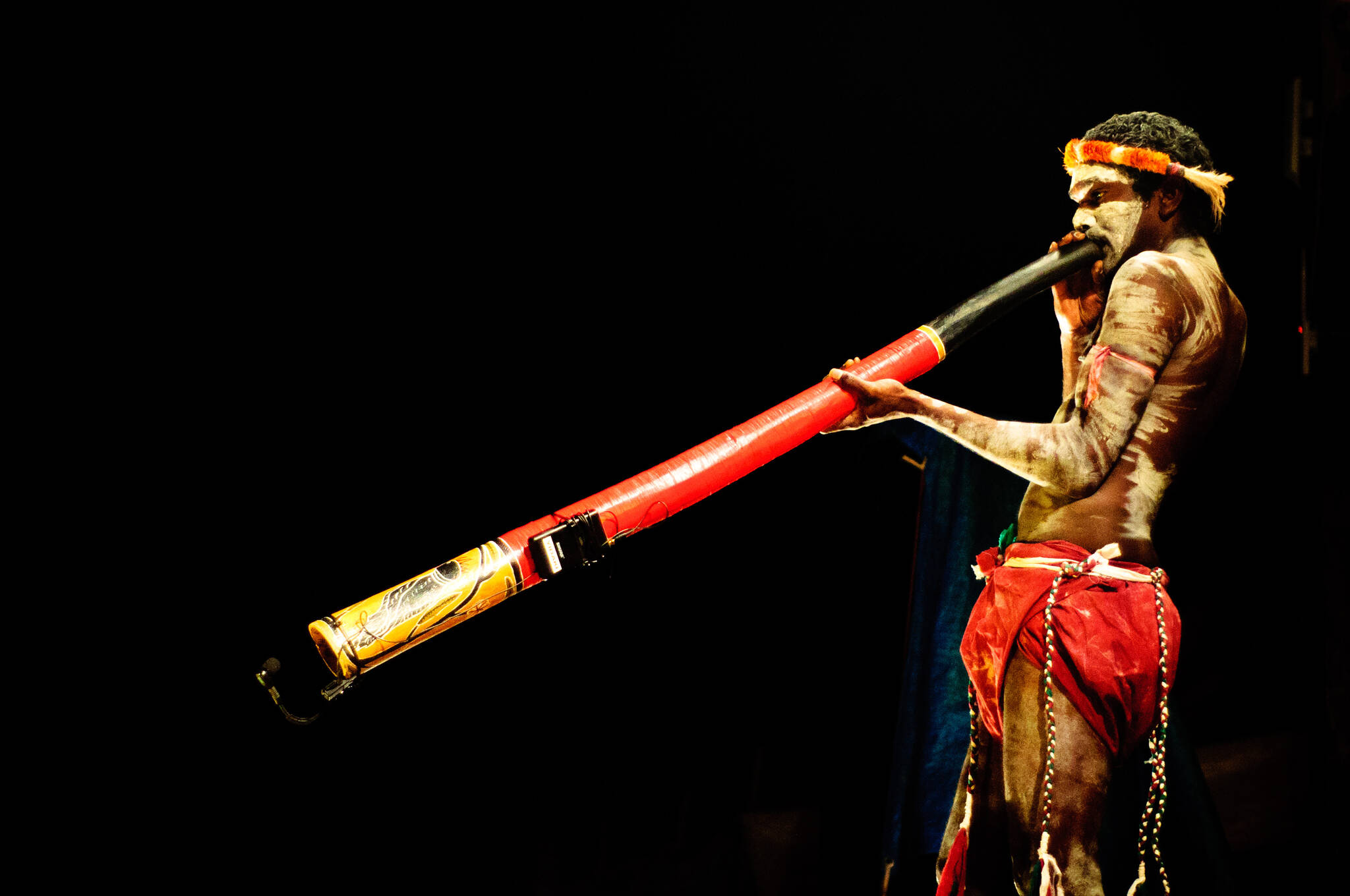For most of us, breathing comes naturally and we don’t have to think about it. Inhale and exhale, alternating. When humans breathe normally, air enters the nose or mouth, passes into the trachea (windpipe), then goes to the two lungs. Gas exchange occurs in the lungs: oxygen is passed from air to the blood stream and carbon dioxide from metabolic processes is passed from the blood to air. Then the ‘used’ air is exhaled by the same passage ways, but in reverse; some residual air is left in the lungs. Movement of air is powered chiefly by the muscular diaphragm.
With training and lots of practice, humans can use other breathing patterns. One of these is called circular breathing. In this technique, air enters through the nose and goes to the lungs, but exhaled air is stored temporarily in the cheeks and pushed out (by the cheek muscles) through the mouth. So instead alternating intake and outflow, outbound air flow is maintained during inhalation by pushing out the air stored in the cheeks. Thus, circular breathing provides a continuous outward flow of air.
Circular breathing has been used for various purposes, including metal-smithing, but perhaps most notably for making music. Musical instruments that use circular breathing have arisen in many cultures in which production of a continuous tone is desired, and musicians have adopted the technique for various modern wind instruments. In some cases, continuous tones can last for half an hour or more. Perhaps the best-known instrument requiring circular breathing is the Australian didgeridoo. This instrument is a hollow tube, cylindrical or tapered, traditionally made from selected trees hollowed out by termites. Sounds are made when a player places the tube against the face and blows, vibrating the lips. The moving air resonates in the tube, acquiring harmonics (overtones). The pitch and resonance of the sound depend on the size of the tube. (Sometimes the output is modified by using the tongue or adding vocalizations.)
Birds have a very different breathing arrangement from that of mammals. Movement of air is powered by expanding and contracting the ribcage (birds do not have diaphragms). The lungs aren’t suspended in the thorax; instead, they are anchored to the dorsal body wall of the thorax. They are relatively small and dense: Instead of having thin-walled spaces that inflate and deflate with each breath, they consist of many narrow air channels intertwined with blood capillaries. The body contains air sacs (which have several functions, and the number of them differs among species) that allow a continuous flow of air through the lungs. Inhaled air comes in through mouth or nostrils to the trachea; it bypasses the gas-exchange part of the lung and goes to a posterior pair of air sacs; exhalation then moves the air into the lungs for gas exchange. A second inhalation moves the ‘used’ air into anterior air sacs and a second exhalation moves it out through the trachea to the outside. In other words, it takes two breaths to move air through the full cycle. Thus, instead of the in/out cycle of mammals, the very efficient avian arrangement allows one-way flow through the gas-exchange part of the lung, and no residual air is left behind.
Breath can also be used to make sounds. In mammals, vocalization typically occurs with exhaling, as the passage of air vibrates membranes in the larynx, which is located at the back of the throat where the trachea and esophagus separate. Birds use a different system: avian vocalizations are typically produced by the syrinx, which is located where the trachea bifurcates, sending branches to right and left lungs. Sound production is controlled by syringeal muscles, pressure from an adjacent air sac, and the diameter of the air passageway. Because the syrinx has two separately-controlled sides, one on each tracheal branch, birds can produce two notes at once.
Breath is also important to the sense of smell. Most non-human mammals have a much better sense of smell than we do, thanks largely to a larger number of olfactory receptors and more of the brain devoted to this function. In addition, although most inhaled air goes directly to the lungs, some is shunted to special areas in the nose that have concentrations of receptors (unlike in humans, in which incoming air passes over receptors on its way to the lungs). Some mammals also have modified nostrils that further increase the capacity to sense smells. Look at the nostrils of a dog, for example.
There is small slit off to the side of the main opening. When a dog sniffs at something, it moves air in and out of the main opening. That outbound air is likely to push away the scented molecules. However, that little side slit diverts the exhaled air off to the side, so the scent intake is not interrupted by exhaling; furthermore, that diverted air stream may stir up more useful molecules and enhance the scents at the next inhalation.
That arrangement is best studied in dogs. But cats have a similar slit on the side of the nostril, and so do some other species, although I have not established a catalog of this feature. I would love to know how well developed this anatomical feature and its function are in other mammals.
• Mary F. Willson is a retired professor of ecology. “On the Trails” appears every Wednesday in the Juneau Empire.

